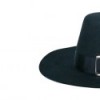 Originally published by L.S.Media. July 6th 2012.
Originally published by L.S.Media. July 6th 2012.
L.S. Media Rating ****
Cast: Graham Wright, Mary Savage, Beth Anderson, Jessica Olwyn, Anne Irvine, Christine Axworthy, James Lydon, Aimee Marrell, Rachel Rosie, Nakib Narat , Agata Jaroscz, Jason Carragher, Agustin Arraez, Lisa Symonds, Kieran McElduff, Karl Hesketh, Richard Harrickey, Alexander Laurel, Albert Hastings, Stacey Liddell, Robert Carter, Peter Higham.
When it comes to staging an Arthur Miller play, it can go horribly wrong or incredibly right. The pressure of living up to the standards of possibly the greatest American playwright of the 20th century is not just magnified; it is peered over, analysed and broken down right down to the very facets that make even The Crucible seem daunting to appear in.
Based on the Salem Witch Trials that shattered American society in the 17th century and a perfect allegory for the obscene McCarthy Communist hunts of the 1950’s, Arthur Miller’s play deserves respect, not just for its almost near perfect sense of haunting resonance but for any actor attempting to take on some of the roles within. It requires great skill and a sense of almost beguiling belief to carry off the roles farmer John Proctor, the Reverend John Hale, Deputy Governor Danforth and Elizabeth Proctor.
In the Merseyside Academy of Drama’s production of The Crucible, the production benefitted beyond measure, as every actor gave the audience a closeted, claustrophobic and intense portrayal of life in the time of un-mitigating and damning suspicion and church control. There were truly sensational performances by Nakib Narat as John Proctor, Lisa Symonds as his wife and Augustin Arraez and Albert Hastings as the two men with seeming state authority on their side who can be seen to have their own private agenda.
The play was framed neatly by the lack of stage setting, with the performers being present throughout and thereby being the ultimate props. Just as the accused were being used to either justify more intrusion into the private lives of Salem’s residents or to gain materially by another’s downfall, the actors on stage were being marvellously used to bring the claustrophobia more and more into the eyes of the appreciative audience.
If the play teaches modern audiences anything it’s that the desire to denounce, to point the finger and condemn. The overwhelming desire to find scapegoat after innocent scapegoat is not confined to the realms of first and second generation of American settlers filled with the superstition of a by -gone age, they are very prevalent and just as scary in the 21st century. All you need to do is accuse!
Ian D. Hall
